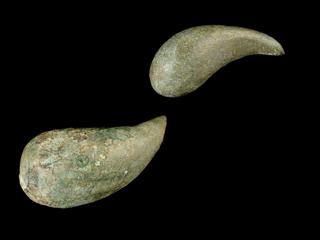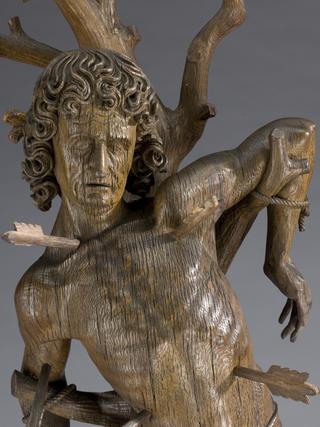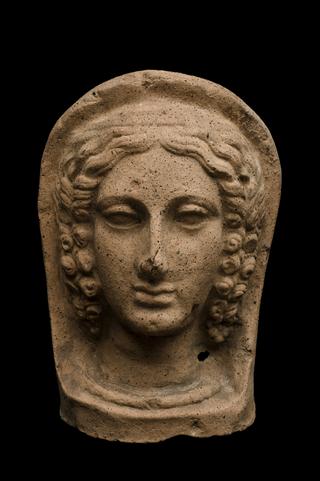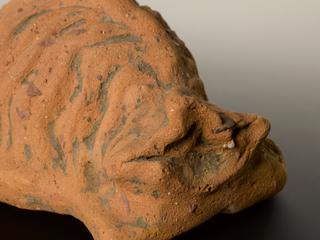
Terracotta votive scalp, Roman, 200 BCE-200 CE
- Made:
- 200 BCE-200 CE in Roman Empire
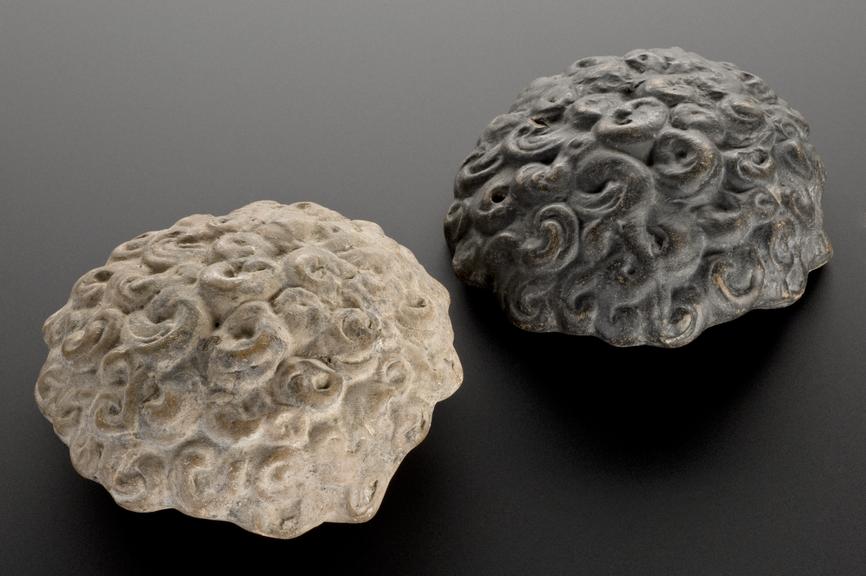
Votive hair, terracotta, probably Roman, 200BC-200AD
Made from terracotta, this votive offering is in the shape of a scalp with hair. Anatomical votives such as this were left at healing sanctuaries and other religious sites as offerings to gods such as Asklepios, the Greco-Roman god of medicine. It was intended either to indicate the part of the body that needed help or as thanks for a cure. This person may have had chronic headaches or hair loss.
Made from bronze or terracotta, as in this case, a large range of different votive body parts were made and offered up in their thousands. Although it originated in earlier cultures, this practice became very popular in Roman Italy – particularly between the 400s and 100s BCE. The votive is shown here with another similar painted example (A634932).
Details
- Category:
- Classical & Medieval Medicine
- Collection:
- Sir Henry Wellcome's Museum Collection
- Object Number:
- A114891
- Materials:
- pottery
- type:
- votive offering
- credit:
- Glendining & Co.

